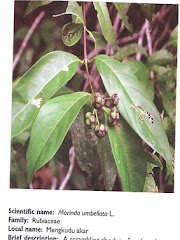Forestry is the art and science of managing forests, tree plantations, and related natural resources. The main goal of forestry is to create and implement systems that allow forests to continue a sustainable continuation of environmental supplies and services. The challenge of forestry is to create systems that are socially accepted while sustaining the resource and any other resourses that might be affected.[1]
Silviculture, a related science, involves the growing and tending of trees and forests. Modern forestry generally concerns itself with: assisting forests to provide timber as raw material for wood products; wildlife habitat; natural water quality management; recreation; landscape and community protection; employment; aesthetically appealing landscapes; biodiversity management; watershed management; erosion control; and a 'sink' for atmospheric carbon dioxide. A practitioner of forestry is known as a forester. Note that the word "forestry" can also refer to a forest itself.
Forest ecosystems have come to be seen as the most important component of the biosphere,[citation needed] and forestry has emerged as a vital field of science, applied art, and technology.
The use and management of forest resources has a long history in China, dating from the Han Dynasty and taking place under the landowning gentry. It was also later written of by the Ming Dynasty Chinese scholar Xu Guangqi (1562–1633). In the Western world, formal forestry practices developed during the Middle Ages, when land was largely under the control of kings. Control of the land included hunting rights, and though peasants in many places were permitted to gather firewood and building timber and to graze animals, hunting rights were retained by the members of the nobility. Systematic management of forests for a sustainable yield of timber is said to have begun in the 16th century in both the German states and Japan.[2] Typically, a forest was divided into specific sections and mapped; the harvest of timber was planned with an eye to regeneration.
Timber harvest is a common component of forestry
The practice of establishing tree plantations was promoted by John Evelyn; it had already acquired some popularity in the British Isles. Louis XIV's minister Jean-Baptiste Colbert's oak forest at Tronçais, planted for the future use of the French navy, matured as expected in the mid-19th century: "Colbert had thought of everything except the steamship," Fernand Braudel observed.[3] Schools of forestry were established after 1825; most of these schools were in Germany and France. During the nineteenth and early twentieth centuries, forest preservation programs were established in the United States, Europe, and British India. Many foresters were either from continental Europe (like Sir Dietrich Brandis), or educated there (like Gifford Pinchot).
The enactment and evolution of forestry laws and binding regulations occurred in most Western nations in the 20th century in response to growing conservation concerns and the increasing technological capacity of logging companies.
Tropical forestry is a separate branch of forestry which deals mainly with equatorial forests that yield woods such as teak and mahogany. Sir Dietrich Brandis is considered the father of tropical forestry.
Today a strong body of research exists regarding the management of forest ecosystems and genetic improvement of tree species and varieties. Forestry also includes the development of better methods for the planting, protecting, thinning, controlled burning, felling, extracting, and processing of timber. One of the applications of modern forestry is reforestation, in which trees are planted and tended in a given area.
In many regions the forest industry is of major ecological, economic, and social importance. Third-party certification systems that provide independent verification of sound forest stewardship and sustainable forestry have become commonplace in many areas since the 1990s. These certification systems were developed as a response to criticism of some forestry practices, particularly deforestation in less developed regions along with concerns over resource management in the developed world. Some certification systems are criticised for primarily acting as marketing tools and lacking in their claimed independence.
In topographically severe forested terrain, proper forestry is important for the prevention or minimization of serious soil erosion or even landslides. In areas with a high potential for landslides, forests can stabilize soils and prevent property damage or loss, human injury, or loss of life.
Public perception of forest management has become controversial, with growing public concern over perceived mismanagement of the forest and increasing demands that forest land be managed for uses other than pure timber production, for example, indigenous rights, recreation, watershed management, and preservation of wilderness, waterways and wildlife habitat. Sharp disagreements over the role of forest fires, logging, motorized recreation and others drives debate while the public demand for wood products continues to increase.
Foresters work for the timber industry, government agencies, conservation groups, local authorities, urban parks boards, citizens' associations, and private landowners. The forestry profession includes a wide diversity of jobs, with educational requirements ranging from college bachelor's degrees to PhDs for highly specialized work. Industrial foresters plan forest regeneration starting with careful harvesting. Urban foresters manage trees in urban green spaces. Foresters work in tree nurseries growing seedlings for woodland creation or regeneration projects. Foresters improve tree genetics. Forest engineers develop new building systems. Professional foresters measure and model the growth of forests with tools like geographic information systems. Foresters may combat insect infestation, disease, forest and grassland wildfire, but increasingly allow these natural aspects of forest ecosystems to run their course when the likelihood of epidemics or risk of life or property are low. Increasingly, foresters participate in wildlife conservation planning and watershed protection. Foresters have been mainly concerned with timber management, especially reforestation, maintaining forests at prime conditions, and fire control.[4]
Foresters develop and implement forest management plans relying on tree inventories showing an area's topographical features as well as its distribution of trees (by species) and other plant cover. Plans also include roads, culverts, proximity to human habitation, hydrological conditions, and soil reports. Forest management plans include the projected use of the land and a timetable for that use. Traditional forest management plans focus on providing logs used for timber, veneer, plywood, paper, wood fuel or other industries. Hence, considerations of product quality and quantity, employment, and profit have been of central, though not always exclusive, importance. Foresters frequently develop post-harvest site plans for reforestation, weed control, fertilization, or thinning. The objectives of landowners and leaseholder influence plans for harvest and subsequent site treatment. In Britain, plans featuring "good forestry practice" must always consider the needs of other stakeholders such as nearby communities or rural residents living within or adjacent to woodland areas. Foresters consider tree felling and environmental legislation when developing plans. Plans instruct the sustainable harvesting and replacement of trees. They indicate whether road building or other forest engineering operations are required.
Agriculture and forest leaders are also trying to understand how the climate change legislation will affect what they do. The information gathered will provide the data that will determine the role of agriculture and forestry in a new climate change regulatory system.[5]
The first dedicated forestry school was established by Georg Hartig at Dillenburg in Germany in 1787, though forestry had been taught much earlier in central Europe.
In 1886, the first issue of Revista Pădurilor (Forestry Review) was published in Romania.[6]
The first in North America, the Biltmore Forest School was established near Asheville, North Carolina, by Carl A. Schenck on September 1, 1898, on the grounds of George W. Vanderbilt's Biltmore Estate. Another early school was the New York State College of Forestry, established at Cornell University just a few weeks later, in September 1898. Early North American foresters went to Germany from the nineteenth century to study forestry. Some early German foresters also emigrated to North America.
In South America the first forestry school was established in Brazil, specifically in Viçosa, Minas Gerais, and later moved to Curitiba, Paraná.[7]
Today, an acceptably trained forester must be educated in general biology, botany, genetics, soil science, climatology, hydrology, economics and forest management. Education in the basics of sociology and political science is often considered an advantage.
An interesting scope of work opens up for foresters interested in international politics. Organizations such as the Forest Policy Education Network are dedicated to facilitate the way into forest politics and to exchange information on the subject.
In India, forestry education is imparted in the agricultural universities and in Forest Research Institutes (deemed universities). Four year degree programmes are conducted in these universities at the undergraduate level. Masters and Doctorate degrees are also available in these universities
Tropic Ventures Rainforest Enrichment and Sustainable Forestry Project is registered under the Auxiliary Forest Program of Puerto Rico, and is a demonstration project for students and foresters interested in the sustainable management and preservation of tropical rainforest land.
In the United States, postsecondary forestry education leading to a Bachelor's degree or Master's degree is accredited by the Society of American Foresters[8
أَلَمْ تَرَ أَنَّ اللَّهَ يُسَبِّحُ لَهُ مَنْ فِي السَّمَاوَاتِ وَالأرْضِ وَالطَّيْرُ صَافَّاتٍ كُلٌّ قَدْ عَلِمَ صَلاتَهُ وَتَسْبِيحَهُ وَاللَّهُ عَلِيمٌ بِمَا يَفْعَلُونَ Tidakkah kamu tahu bahwasanya Allah: kepada-Nya bertasbih apa yang di langit dan di bumi dan (juga) burung dengan mengembangkan sayapnya. Masing-masing telah mengetahui (cara) solat dan tasbihnya, dan Allah Amat Mengetahui apa yang mereka kerjakan. an-Nur:41
Tazkirah
Sami Yusuf_try not to cry
mu'allim Muhammad Rasulullah Sallallahu alaihi waSalam
ummi_mak_mother_ibu_Sami Yusuf
zikir Tok Guru Nik Abdul Aziz Nik Mat Mu'allimul Mursyidi
syeikh masyari afasi
ruang rindu
song
Arisu Rozah
Usia 40

Mudah mudahan diluaskan rezeki anugerah Allah
usia 40 tahun

UPM

Kuatan Pahe Darul Makmur
pemakaian serban semsa menunaikan solat_InsyaAllah ada sawaaban anugerah Allah
Rempuh halangan

Abah_menyokong kuat oengajian Ijazah UPM

usia 39 tahun

usia 23 tahun_UPM
An_Namiru

Ijazah Pengurusan Hutan UPM

General Lumber_Nik Mahmud Nik Hasan

Chengal

Tauliah

Semasa tugas dgn general lumber

PALAPES UPM

UPM

Rumah yang lawa

Muhammad_Abdullah CD
semasa bermukim di Kuatan Pahe Darul Makmur
Ijazah

air terjun

Borneo land

GREEN PEACE
GREEN PEACE
Kelang

Ahlul Bayti_ Sayid Alawi Al Maliki

Asadu_ Tenang serta Berani

atTiflatul Falasthiniin

Sayid Muhammad Ahlul Bayt keturunan Rasulullah

AnNamiru_SAFARI_Kembara

AnNamiru_resting

Hamas

sabaha anNamiru fil nahri

Namir sedang membersih

Tok Guru Mualimul_Mursyid

An_Namiru
.jpg)
Namir_istirehat
.jpg)
SaaRa AnNamiru fil_Midan
.jpg)
Renungan Sang Harimau_Sabaha AnNamiru
.jpg)
Syaraba AnNamiru Ma_A
.jpg)
AnNamiru_Riadhah
.jpg)
AnNamiru_Riadhah
.jpg)
AnNimru ma_A waladuha
Namir fil_Ghabi (sebut Robi...
Namir

AdDubbu_Beruang di hutan

Amu Syahidan Wa La Tuba lil_A'duwwi

AsSyahid

Namir

Tangkas
najwa dan irah

sungai

najwa

najwa

Kaabatul musyarrafah

unta

Jabal Rahmah

masjid nabawi

masjid quba

dr.eg

najwa dan hadhirah

along[macho]
![along[macho]](https://blogger.googleusercontent.com/img/b/R29vZ2xl/AVvXsEjuMi7D33CmR0_KXrCW2XigfLcUuQurcvtqOS139ncCwEzCyB-jUopk7QK7anADIenJEm2S0N6gAY1ubnACYXewgiAsI3rBjnLTawM39alLL-rEopOoVqn0w5WpLhPJH3hrXNtchEhgtyaI/s240/P7150023.JPG)
harissa dan hadhirah

adik beradik
Tongkat Ali

Tongkat Ali
herba kacip Fatimah
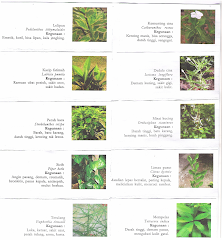
herba Kacip Fatimah
hempedu beruang
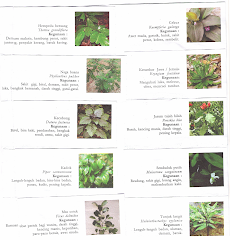
hempedu beruang
hempedu bumi

hempedu bumi
herba misai kucing

herba misai kucing
herba tongkat Ali
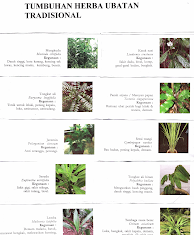.png)
Tongkat Ali
Ulama'

Ulama'
kapal terbang milik kerajaan negara ini yang dipakai pemimpin negara

kapal terbang
Adakah Insan ini Syahid

Syahid
Tok Ayah Haji Ismail

Saifuddin bersama Zakaria

Dinner....
Sukacita Kedatangan Tetamu
Pengikut
Kalimah Yang Baik

Ubi Jaga

Ubi Jaga
Arkib Blog
Burung Lang Rajawali

Chinese Sparrowhawk
Kelicap Mayang Kelapa

Brown-Throated Sunbird
Kopiah

Pokok Damar Minyak

Kacip Fatimah
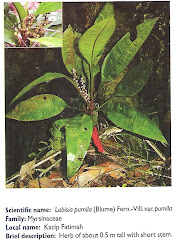
Mengkudu Akar
